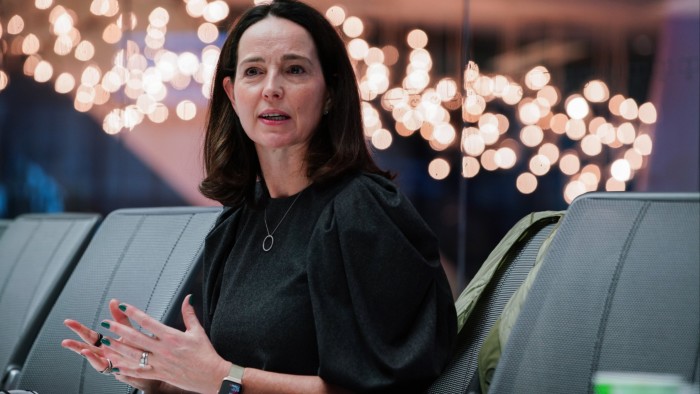Unlock the Editor’s Digest for free
Roula Khalaf, Editor of the FT, selects her favourite stories in this weekly newsletter.
OpenAI is discussing plans to introduce advertising to its artificial intelligence products, as the ChatGPT maker seeks new revenue sources as it restructures as a for-profit company.
Sarah Friar, chief financial officer at OpenAI, told the Financial Times in an interview that the $150bn AI start-up was weighing up an ads model, adding that it planned to be “thoughtful about when and where we implement them [ads]”.
The San Francisco-based group, which in October secured $6.6bn in new funding, has been hiring advertising talent from big tech rivals such as Meta and Google, according to multiple people familiar with the matter and an FT analysis of LinkedIn accounts.
In a statement following the interview, Friar added: “Our current business is experiencing rapid growth and we see significant opportunities within our existing business model. While we’re open to exploring other revenue streams in the future, we have no active plans to pursue advertising.”
OpenAI is stepping up efforts to generate revenue from its products, such as its AI-powered search engine, as it seeks to capitalise on its early lead in the booming AI sector. Its smaller rival Perplexity is already piloting advertising in its AI-powered search engine.
Friar, who previously held leadership roles at companies such as Nextdoor, Square and Salesforce, pointed to the wealth of advertising experience between herself and Kevin Weil, the company’s chief product officer.

Weil was previously responsible for building out ad-supported products at major tech platforms including Instagram and X. “The good news with Kevin Weil at the wheel with product is that he came from Instagram. He knows how this [introducing ads] works,” said Friar.
In May OpenAI also hired Shivakumar Venkataraman, who previously led Google’s search advertising team, as vice-president.
Advertising has been a highly successful route for big tech companies such as Google and Meta to monetise their huge online audiences. But OpenAI executives are divided on what advertising might look like on their platform, according to two people with knowledge of the discussions.
Chief executive Sam Altman is warming up to the idea, according to a person familiar with his thinking.
The fast-growing group, which is now one of Silicon Valley’s most valuable private companies with a $150bn valuation, is in the midst of restructuring as a for-profit corporation.
The steep costs of training new models means AI start-ups including OpenAI, Anthropic and Elon Musk’s xAI are looking for new ways to commercialise their technology and are engaged in frequent fundraising efforts.
OpenAI’s revenues have surged to about $4bn on an annualised basis thanks to the runaway success of ChatGPT, putting it among the fastest-growing start-ups of all time. The chat bot, which launched two years ago, has grown to more than 250mn weekly active users.
But the massive costs associated with developing “frontier” AI models mean OpenAI anticipates burning through considerably more than the company is spending each year in the near-term. It is on track to burn through more than $5bn of cash.
One of OpenAI’s largest sources of revenue comes from access to its application programming interface (API), which enables businesses and developers to build with its technology, as well as by selling individual and enterprise licences of ChatGPT.
“They are pursuing consumer productivity and consumer search. The API is not a high margin business,” the person added.
Friar pointed out that ad models come with drawbacks, including the fact they are sensitive to swings in the broader economic cycle, and that they tend to shift a company’s focus from pleasing their users to their advertisers.
“I don’t preclude [ads],” she said. “But for now there’s lots of low hanging fruit in the way we are doing things.”


